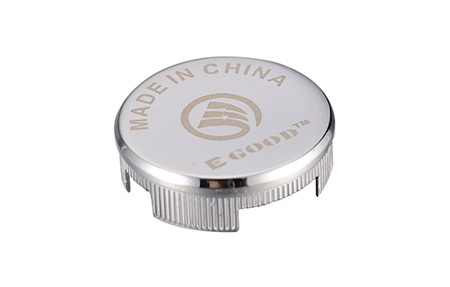What are the requirements of CNC parts processing technology?
2020-04-07What are the requirements of CNC parts processing technology?
The rotation speed, feed speed and cutting speed of the spindle of the CNC part machining center are mainly determined by the tool, and the setting amount of different tool parameters for processing the same material is also different. However, the tool will provide the parameters set at the time of purchase. For example, different imported tools provide parameters for processing different materials, such as maximum feed rate, cutting volume, and cutting speed.
Cutting speed, feed speed and cutting depth are the three elements of CNC parts machining cutting conditions, which directly lead to tool damage. As the cutting speed increases, the temperature of the cutter head will increase, resulting in mechanical, chemical, and thermal wear. If the cutting speed is increased by 20%, the tool life will be reduced by 1/2. The relationship between the feed conditions for CNC part machining and the wear on the back of the tool occurs within a very small range. However, the feed rate is high, the cutting temperature increases, and the rear wear is large. Its impact on the tool is less than the cutting speed. The influence of cutting depth on the tool is not as great as the cutting speed and feed, but when the cutting depth is small, a hardened layer will be formed on the material being cut, which will also affect the service life of the tool.
During the machining of CNC parts, the cutting speed needs to be selected according to the material to be processed, hardness, cutting state, material type, feed rate, cutting depth, etc. The selection of suitable processing conditions is based on these factors. Regular and stable wear is the ideal condition to achieve longevity. CNC parts processing requires reasonable selection of fixtures. The parts should fully meet the needs of the machine to reduce unnecessary positioning errors, so select special fixture clamping tools. The processing route is the movement path and direction of the tool relative to the part during the processing of the index-controlled machine tool. It should be able to ensure the machining accuracy and surface roughness requirements, and the machining route should be shortened as much as possible to reduce the tool empty travel time.
Khi các bộ phận CNC được gia công để phay mặt, nên chọn máy phay cuối hoặc máy phay cuối cacbua không hồi lưu. Nói chung, hãy cố gắng sử dụng hai đường chuyền. Đường chuyền đầu tiên tốt nhất là phay thô bằng máy nghiền cuối và các đường chuyền liên tục dọc theo bề mặt phôi. Máy nghiền cuối và máy nghiền cuối có chèn cacbua chủ yếu được sử dụng để gia công các rãnh, rãnh và bề mặt mở hộp. Dao tròn và dao tròn (hay còn gọi là dao đầu tròn) thường được sử dụng để gia công các bề mặt cong và biên dạng côn biến đổi. Tuy nhiên, máy cắt bóng chủ yếu được sử dụng để bán hoàn thiện và hoàn thiện. Trước khi các bộ phận CNC được xử lý, cần xác định lộ trình xử lý cho phần eo. Rút ngắn lộ trình xử lý càng nhiều càng tốt để giảm mài mòn máy móc.
The above explains the requirements of CNC parts processing technology. I hope it will be helpful to you after reading. If you want to learn more about CNC parts processing, please feel free to consult customer service online or call our service hotline ( The upper right corner of the website) for consultation, we will wholeheartedly provide you with quality service!





